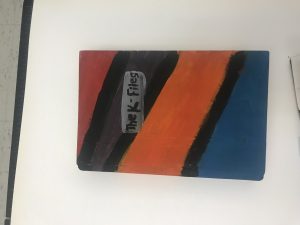
Hours spent- 2
The picture that I based my book cover off of was a painting of a sunset with trees. I can’t really draw so I mad a abstract like cover that represents all colors that I used to make the color proportions.

Ways of Seeing – FYLC Fall 2018
First Year Learning Community
Verb
Definition- persistently avoid, ignore, or reject (someone or something) through antipathy or caution.
I found this word In the text of “Here Poverty and Privilege are Neighbors; Income Gaps are a Source of Resentment and guilt” by Janny Scott where it talks about how the wealthy people were “shunned” as they were being pushed into by neighbors.
Adjective
Definition- “essentially different in kind; not allowing comparison.”
“here, poverty and privilege are neighbors, income gaps are a source of resentment and guilt” where it states “A defining characteristic New York city its is economic diversity, The juxtaposition of people of disparate circumstances in limited spaces.”
Noun
•a process or set of rules to be followed in calculations or other problem-solving operations, especially by a computer.
I encountered this word in the final that we took, the article “when your boss is a algorithm” where it mainly talks about what Uber drivers have to go through because there boss is a system on a phone.
Noun
•the study of the development, structure, and functioning of human society.
I found this word in the text of “A professor of sociology at queens college” where it says,“Here, poverty and privilege are neighbors; income gaps are a source of resentment and guilt”.
Verb
•make (someone) a priest or minister; confer holy orders on
•order or decree (something) officially.
The word ordained is used a lot for sayings like “equal punishment was ordained for the two crimes”. The word also has a definition that supports the previous definition which is to make someone priest or minister.
Important aspects of E.N.’s draft:
To do BY THE END OF 12/3:
Freewrite:
What goes into the catalog entry?
FOR MONDAY 12/3:
Techniques:
How much does the text matter vs. the visual?
Theme, technique, argument:
What would you want to know more about?
search terms